Catfish. (2010) Henry Joost and Ariel Schulman
There's a moment in the middle of
Catfish when it hits you that the film could go practically anywhere. It's a fun moment because you're never really certain where you stand with the film anyway. Is it a documentary? A prankumentary? A fuck-u-mentary? What kind of a "mentary" is this?
With
Exit Through the Gift Shop and
I'm Still Here, 2010 has already given its fair share of new school thought that says, "I am going to tell my story whether it's true or not. I hope you enjoy the story." It was a blast of artistic irony and comedy in Banksy's hilarious offering
Exit Through the Gift Shop. It was insufferable, miserable, a life gone wrong and right in your face in
I'm Still Here.
Catfish differs from both of these. It's neither a comedic delight nor an assaultive mess, but for what it's worth, I think I actually smiled through the entire first half of it.
The moment I mentioned is so much fun because you realize that honestly, at this point in the story,
anything can happen, which is weird to think in a documentary-style film. We don't normally think that a monster or a serial killer is going to pop out of the woods during a Michael Moore film. We don't think an ATF helicopter might descend on an investigative Errol Morris-type scene of some young men from NYC driving in upper peninsula Michigan at night. A deer might cross their path, and they might hit it and wreck their rental -- but surely that'd be found in a Herzog doc -- not here. Right?
What really amazed me at the end of
Catfish was the division of emotions segregated inside me as I watched from beginning to end. I followed the main character Nev from surprise and astonishment, to amazement and infatuation, to fear, to discovery and back to fear (a different kind), to identifying with another, to sadness and wonderment and finally astonishment again -- all in 94 minutes. Many movies do this. They play with our emotions and take us on a roller coaster ride of feeling. But for some reason in
Catfish it feels like each emotion is its own chapter. It's divided so clearly it feels like the emotions are running the show.
And perhaps they are. Perhaps there's more manipulation here than at first we were led to believe. But I don't think it matters, if we surrender to the story. All art is a lie, yes? All art has to lie a little to get to a form of truth.
So
Catfish is a story, whether truth or lie, that kind of piggy backs off
The Social Network, a social myth of sorts, fusing into a first person
My Kid Could Paint That (a great docu-DVD rental, see below), and kind of rounding off as a make-up session after all the dumb Immatures just exploded on an ego-fueled reality show. It's the story of a talented eight year-old painter, maybe. Or maybe it's the story of painter girl's 19 year-old sister, who is just too good to be true. (Note the forum.) It is definitely a story of internet sociality and deceit, but above all it's about dealing with that great big Hole -- that needing, searching Hole you've felt when something was stolen from you, or when a relationship falls apart. It's the -- "what happened?" that's left unanswered, trying to find out where things went wrong.
It's that nagging need to figure out just how you were duped, and why. Film it in DV and send it from New York City to Michigan, cuz that's really what
Catfish is about.
Freakonomics. (2010) Full list of directors
Here.
The trailer for this one looked like so much fun that I made a trip to the local library and got the New York Times Bestseller. The Revised and Expanded Edition of Freakonomics has been sitting next to my toilet for close to two months through several renewals. It is perfect bathroom reading, but I've often found myself asking why I should care about its insights -- it
is insightful, don't get me wrong. It just seems that a lot of work has been put into reading data and studying incentives that would otherwise be trumped by common sense.
The movie version, directed by various excellent filmmakers, turns out to be a light doc, mostly happy with a shade or two of gray. Nothing wrong with that, it's good to think happy thoughts sometimes, but again, while some of the insights are interesting, I remain unconvinced they have much to do with a deeper level of Me.
I'm going to go ahead and spoil this one, so if you don't want the knowledge of the insights in
Freakonomics, don't read on. However, if you're somewhat familiar with the book or have caught a glimpse of the trailer, you already know everything that's in the film, so honestly, this is no big deal:
1. Real estate agents would rather have a bird in the hand than two in the bush.
2. No matter what you name your kid, he or she may or may not succeed.
3. Some sumo wrestlers have been known to cheat.
4. You can potty train a child with M&Ms. (DUH! I have done this.)
5. Population curves as a result of Roe v. Wade have even effected percentages of criminality in the early 90s.
6. You can bribe some 9th graders to do well in school. Others, you can't.
The film is simple, but fun. I like the concentration on incentives and don't think I've seen it covered like this before, but I have a hard time thinking that a rogue economist like Steven D. Levitt can't come up with anything more interesting.
Even with its simplicity and inability to part from the topics of the book, I recommend the film based on its different directors -- all admired for previous documentary work -- and out of the sheer fun the movie has with itself. It's like going back to school with the coolest teacher on campus and letting his brain run free combining sociology with economics.
My Kid Could Paint That. (2007) Amir Bar-Lev
Much like this year's
Exit Through the Gift Shop,
My Kid Could Paint That is about art and its authentic value: its birthing process, its original purity, and the ability of a seller to exploit it. In particular, the film may ask why some are willing to spend so much on what's passed off as art -- a problematic issue in
My Kid Could Paint That because we're discussing the abstract art of a four year-old. Can four year-olds even think in abstract terms?
This is the perplexing story of real-life child prodigy
Marla Olmstead, the story of a kid and her paintings which confound the adult mind. If everything is as true as reported and she's receiving no artistic guidance from dad -- something which may never actually be known -- she's been confounding even her parents since she first started using dad's professional paints and easels to begin working at age three. This kid's got incredible talent if everything as represented here is true.
(Big "If.")
Her first painting sold for $250. A few years later and she's now sold around $300,000 -- which mom and dad wisely put in a college fund.
The story starts out easy enough. Marla made a few paintings, a local New York art dealer saw them at a coffee house and decided to host a show to see if they would sell. They did. When people began learning about the child behind the art, the demand went through the roof to the point where Marla would never be able to meet the demand. Local press picked all this up, and the New York Times ran a story on it as well. Soon Marla and her paintings were featured in Time Magazine, on CBS and the BBC, as well as newscasts around the globe.
Her dad enjoyed all the attention Marla was getting, but mom's reception was more tepid, realizing the fickle nature of the media -- that in an age of instant fame there's usually a backlash, a turning against the thing that gave someone (even a four year-old) their fifteen minutes. What she didn't realize was how ugly this was going to be.
When "60 Minutes" covered the story on one of their weekly segments, they raised questions that, in my opinion, haven't been answered, but are heartbreaking nonetheless. They brought on a child psychologist who questioned whether Marla could truly have been the sole creator of these paintings, or whether the paintings we see her doing alone are inferior compared to the times when she's off camera with her (artist) dad.
Am I really a cynic if I agree with the "60 Minutes" segment? The paintings Marla did look too advanced, with too many styles. Even after her parents produced a five hour video showing Marla working on a painting ("Ocean") from beginning to end, I have to admit it wasn't as good as many of the other paintings already sold. This is one of those times where I hope that my cynicism is wrong, however, it looks to me like the paintings were doctored by dad.
But what does it matter? Are people buying these paintings for their end result alone, or only because they know a four year-old created them? Wouldn't they be just as beautiful and valuable if they were made by the daughter and father together? And in a way, aren't they? As her coach, dad provided Marla with all the paints and supplies she needed. He was a great assistant to her, the kind any professional would desire.
Beauty is beauty, but not in the eyes of all.
Encounters at the End of the World. (2007) Werner Herzog
Encounters at the End of the World is the third Herzog for which I've given a perfect Netflix 5/5 stars. I may as well go ahead and just share my Herzogian Netflix ratings:
5.0/5
Stroszek
5.0/5
Fitzcarraldo
5.0/5
Encounters at the End of the World
4.5/5
Aguirre: The Wrath of God
4.5/5
Grizzly Man
4.0/5
The Enigma of Kasper Hauser
3.5/5
Nosferatu the Vampyre
3.0/5
The White Diamond
3.0/5
Rescue Dawn
3.0/5
My Best Fiend: Klaus Kinski
1.5/5
Bad Lieutenant: Port of Call New Orleans
1.0/5
Wild Blue Yonder
I am on a huge Herzog kick as of late. I've been trying to see at least one of his films a month. I think he may be becoming one of my all-time favorite directors. If not that, he easily ranks as one of my favorite all-time personalities!
Encounters at the End of the World hits on so many amazing levels. Herzog takes what would by some other filmmaker be a great documentary on nature, specifically the Antarctic, and turns it into a study not only of nature itself, but of the people who study the nature --
they being just as interesting as
it. And that easily sums up exactly why I've fallen so in love with this guy as of late. He loves studying and digging into and talking about people, he loves filming them and hearing their stories (especially when their stories are outrageous, which I'm sure he encourages, and probably even encourages them to exaggerate). It has been mentioned how fascinated he is with nature, and the struggle within that framework to wrestle its adversity into film. But he's also fascinated by the nature of man, and mankind itself, and how to express some of man's strangest thoughts and actions.
It is such a huge turn-on to see this in so many Herzog films. Think about it: How many directors are actually so interested in others that that is exactly what they want to display? Many filmmakers want to create something big and grande, and be known for it, and that's fine. Herzog finds the big and grande in everyone around him, and puts it on display, and in doing so he also becomes big and grande with his subjects.
So like with Timothy Treadwell in
Grizzly Man and Bruno S. in
The Enigma of Kasper Hauser and
Stroszek, Herzog once again ends up in an odd location -- here, the south pole -- and the film becomes a nature film for PBS that's as much about the odd scientists (and divers and welders and physicists) as it is about the location itself. And all of these people are so odd and worth probing -- so worth checking out for their oddities -- they just kind of slid south of civilization, all the way down to the south pole.
So not only do we get shots of an underwater life that is more alien than anything in a sci-fi film (riffed on when the scientists sit around watching the old horror film
Them), not only do we get to ponder a penguin that we can't stop as he blatantly journeys to his own demise, not only do we get boot camp for survival training and learn how to keep our group alive in a white-out (hilarious scene!), and explore volcanoes and the deepest parts of the coldest oceans on earth, but we get to explore the hearts of the travelers, to find out what makes them tick. To see through their eyes, and as it is mentioned more than once, to let the Universe discover its importance through their consciousness.
It is filled with danger, deep thoughts, ironies, humor, and those typical Herzogian moments of the completely bizarre Other.
It also seems to lack some of the scenes from other Herzog films that we've had cynical takes on before -- the Treadwell death tape that remains as the "white elephant" in
Grizzly Man's empty room, or the cave behind the Guyanese falls that he couldn't possibly show for cultural reasons in
The White Diamond.
Encounters feels so close to Herzog's heart that the idea of a lie or a trick is held at a distance; we feel these tender scenes and he really wants to earn our trust, which may be difficult considering we've had the rug pulled out before.
For me, it worked. I fell in and trusted him completely this time. He was far too convincing for me to doubt, even an inch. The doc is an incredible study on man, animal, and life on the planet in general. Even in the final few scenes we delve into quantum physics, a search for ultimate reality, which for this crew is a desire for God.
Most of my film buddies aren't readily in agreement with me on the 5/5 greatness of
Encounters at the End of the World, but I was able to fuel some fiery thoughts
Here, where local A&F conversation was scrumptious.






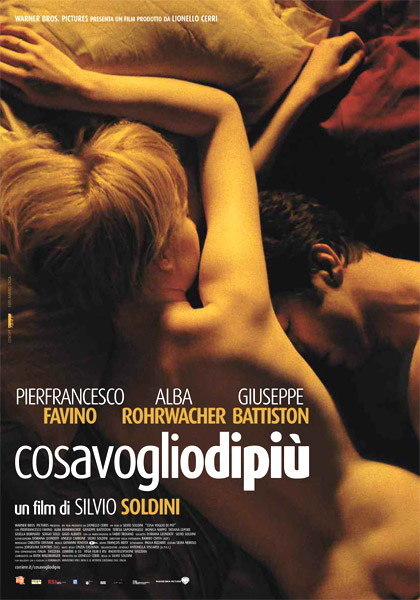





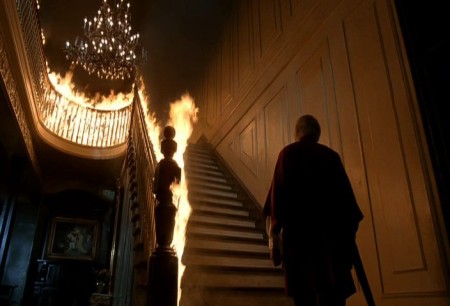
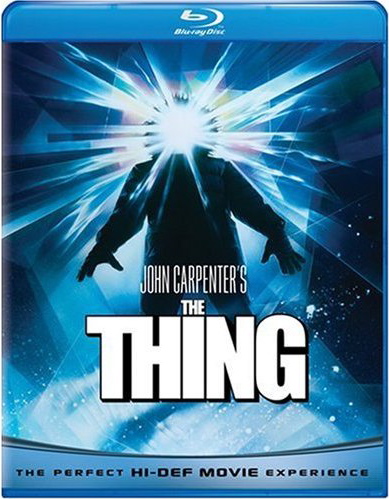


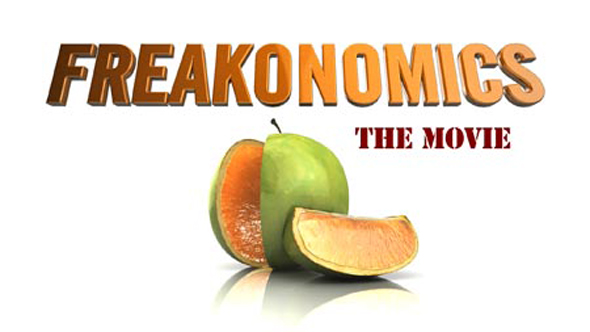

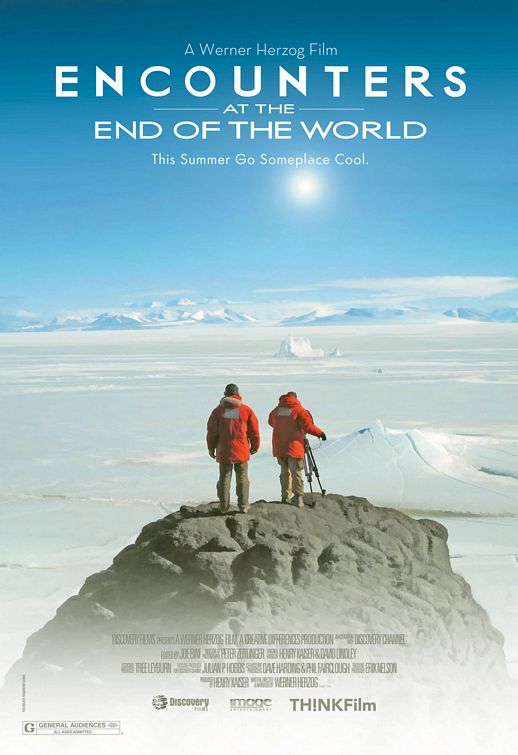





.jpg)


